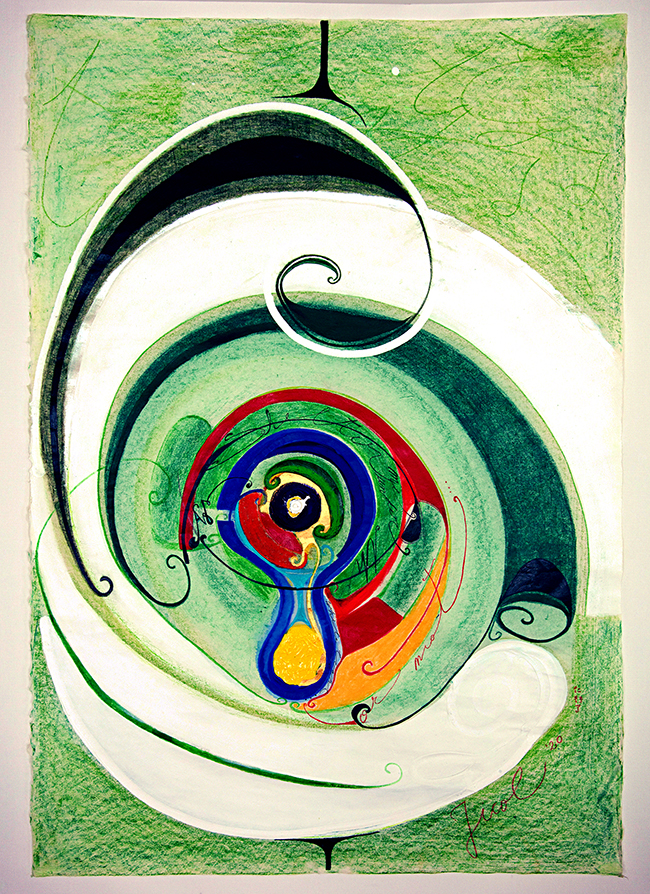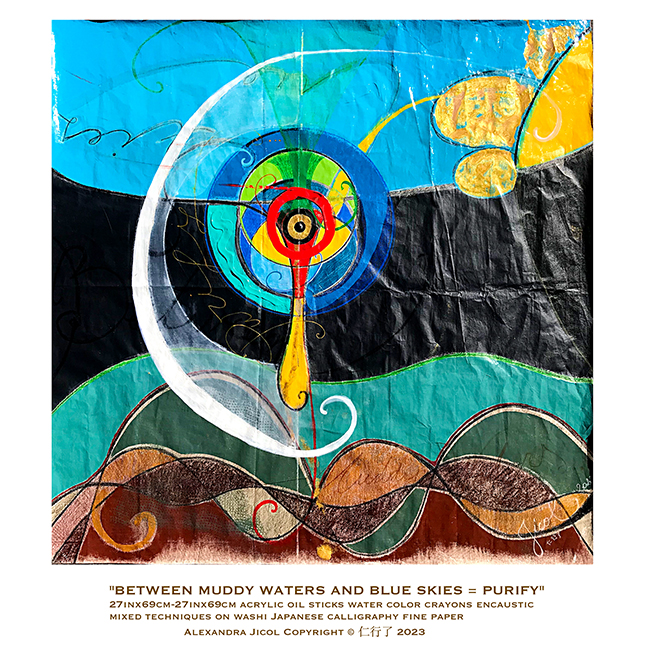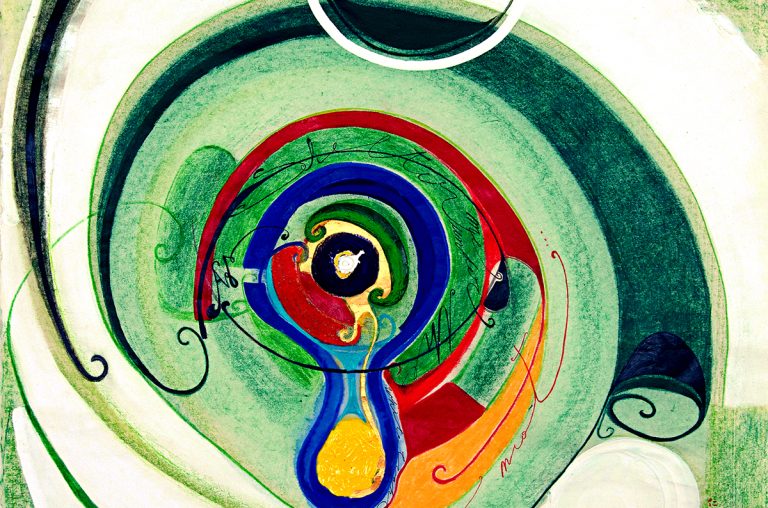Alexandra Jicol, a Romanian artist, grew up in Bucharest during an era defined by political strife and restricted freedoms. Her childhood unfolded between two vastly different environments: the tranquility of the mountains, where she spent part of her time, and the vibrant yet challenging city of Bucharest, where she often explored the Romanian television studios alongside her mother. These contrasting settings shaped her perspective, fostering a sharp eye for detail and a deep sense of curiosity that continue to drive her creative expression.
Jicol sees herself as a lifelong observer and a seeker of understanding. She approaches life as a journey, embracing the opportunity to learn, express, and share with an open and tolerant heart. Her artistic philosophy reflects this mindset, as her creations serve as visual manifestations of her internal reflections and the nuanced observations she gathers from the world around her.

AGS shelter me under the white light …or, NOT
This artwork, created on raw Japanese handmade paper from Fukuro Studio, is an intricate exploration of longing, protection, and emotional balance. The piece measures 26 x 37.2 inches (67 x 96 cm) and incorporates acrylic, oil sticks, and water crayons. Fukuro Studio, a small workshop in the mountains, provides Jicol with traditional washi paper, its uncoated texture lending itself to the layering and relief techniques she employs.
At its core, the painting symbolizes a yearning for affection and safety. A round white circle dominates the composition, serving as a protective envelope for the soul. Within it, an abstract form—a combination of an eye, a tear, and a fetal shape—represents the essence of being. This core radiates emotions through dynamic, curved lines and bursts of color.
The vibrant colors are carefully harmonized to evoke a sense of movement and sensuality. The swirling lines, which bend and twist in a circular rhythm, convey fluidity and continuity. This dynamic dance of shapes is stabilized by two horizontal lines at the top and bottom of the piece, grounding the viewer and symbolizing the need for stability amidst emotional turbulence.
Hidden within the painting are secret words, written like spells, adding a layer of mystery and intimacy. These messages, embedded in the textured surface, are only partially visible, inviting viewers to look closer and connect with the narrative.
Jicol’s technique involves multiple layers of heavy body acrylic, oil sticks, and water crayons. The interplay of textures and reliefs creates depth, allowing the piece to transform under different light conditions. This dynamic quality makes the painting feel alive, its meaning shifting as the light changes.

Between Muddy Waters and Blue Skies = Purify
In this piece, Jicol explores the internal struggle between darkness and light. Created on Japanese calligraphy paper mounted on a wood support, it measures 27 x 69 cm. The materials include acrylic, oil sticks, water crayons, and encaustic, which give the painting its distinct texture and depth.
The central motif is an eye suspended between two realms: the muddy waters below and the blue skies above. The eye symbolizes the soul, caught at a crossroads. Despite the weight of the dark waters, the eye is closer to the blue skies, hinting at the artist’s belief in humanity’s innate inclination toward spiritual growth and transcendence.
A white line, a recurring element in Jicol’s work, acts as a shield, offering protection from darkness. The upper right corner features a golden sun, rendered using encaustic and gold paint. The sun represents life and the spiritual energy that uplifts the soul.
The layering technique used here is more subtle than in “AGS shelter me under the white light …or, NOT” Some layers are bold and pronounced, while others are barely perceptible, revealing themselves only under specific lighting conditions. This interplay between light and shadow adds an almost meditative quality to the work, encouraging viewers to pause and reflect.
Both of these artworks highlight Alexandra Jicol’s ability to weave complex emotional and spiritual themes into her work. Her use of Japanese washi paper not only adds an element of tradition but also reflects her respect for the craftsmanship behind her materials. The layered textures, hidden messages, and dynamic interplay of light and shadow are hallmarks of her style.
Jicol’s work is deeply personal yet universally resonant. Through her art, she invites viewers to reflect on their own emotional landscapes, offering a sense of connection and understanding. Her ability to balance the chaos of swirling emotions with elements of stability and protection speaks to her philosophy of embracing life with curiosity and tolerance.
Jicol’s art is not about offering answers but about exploring questions—questions of love, balance, and the eternal push and pull between light and darkness. In her hands, these themes become tangible, rendered in color, texture, and form, leaving viewers with a sense of quiet introspection and awe.

